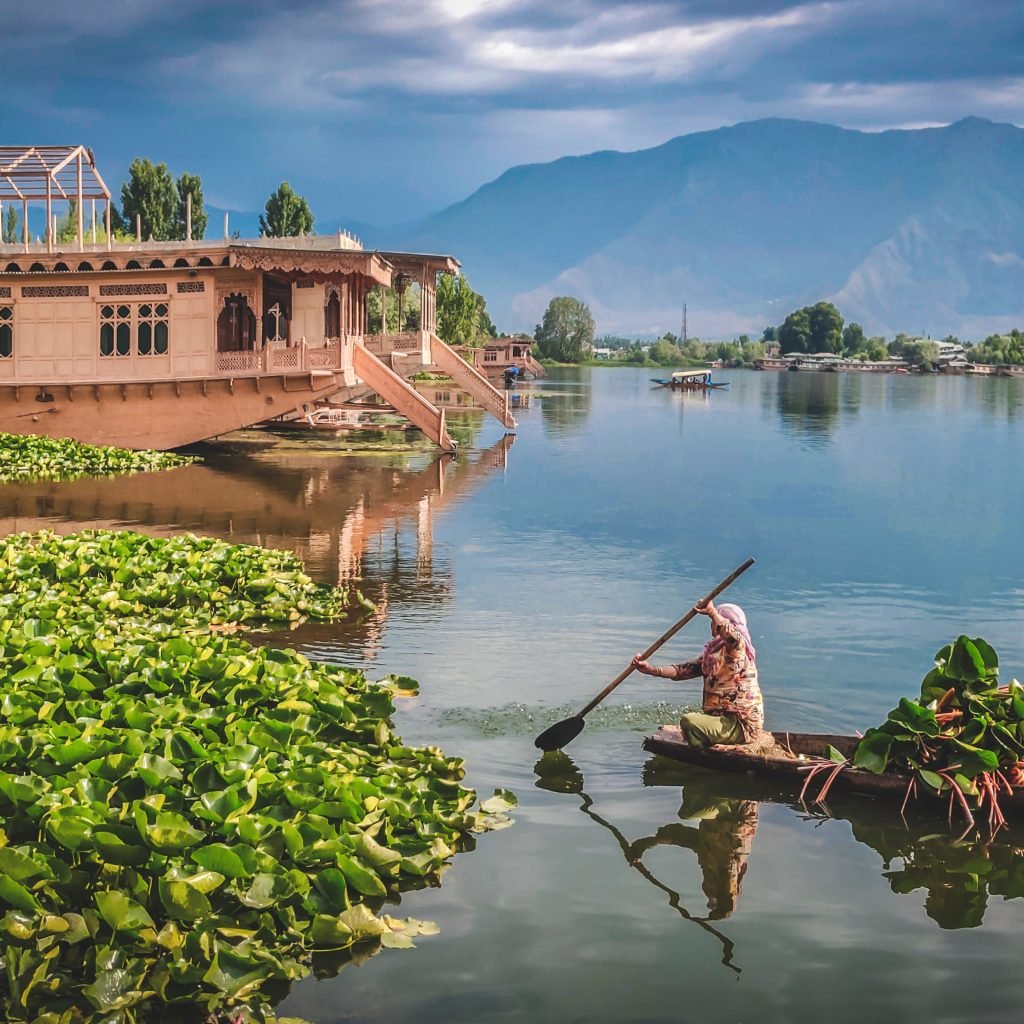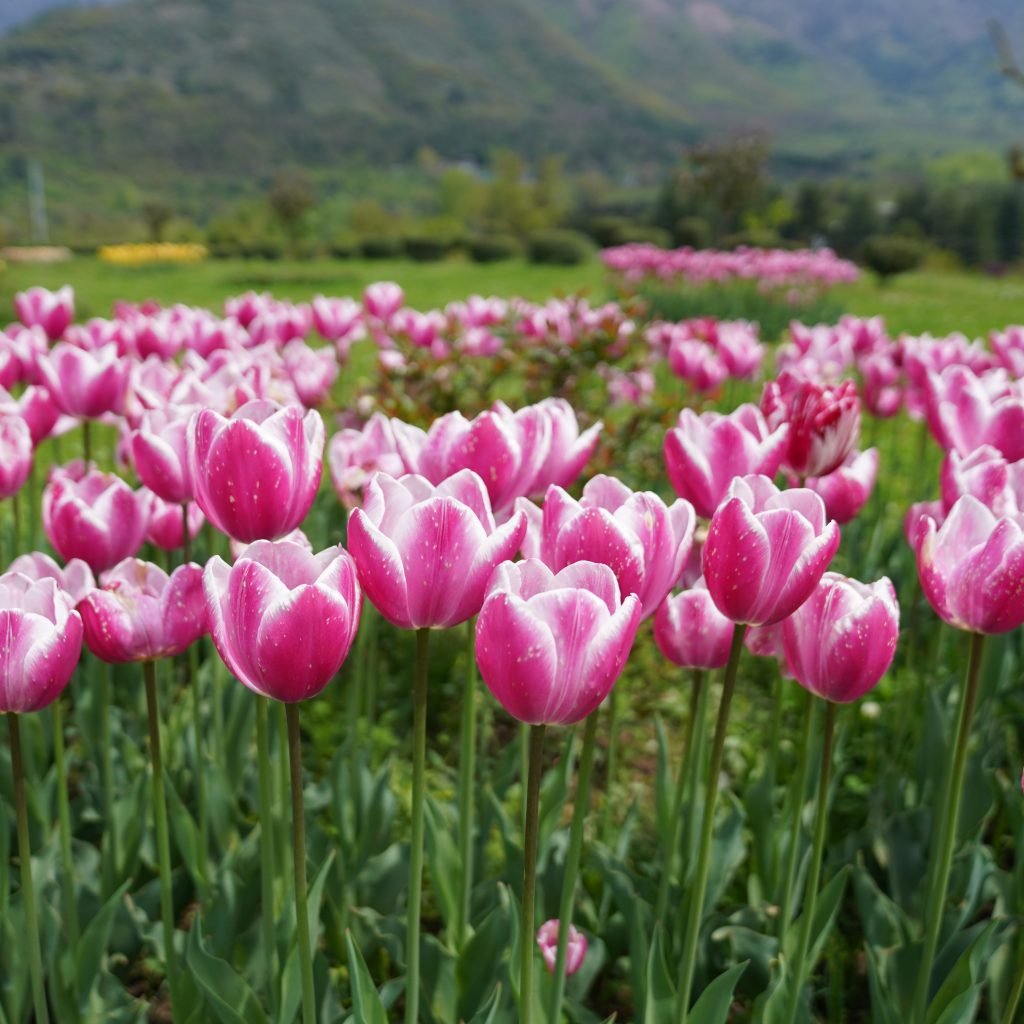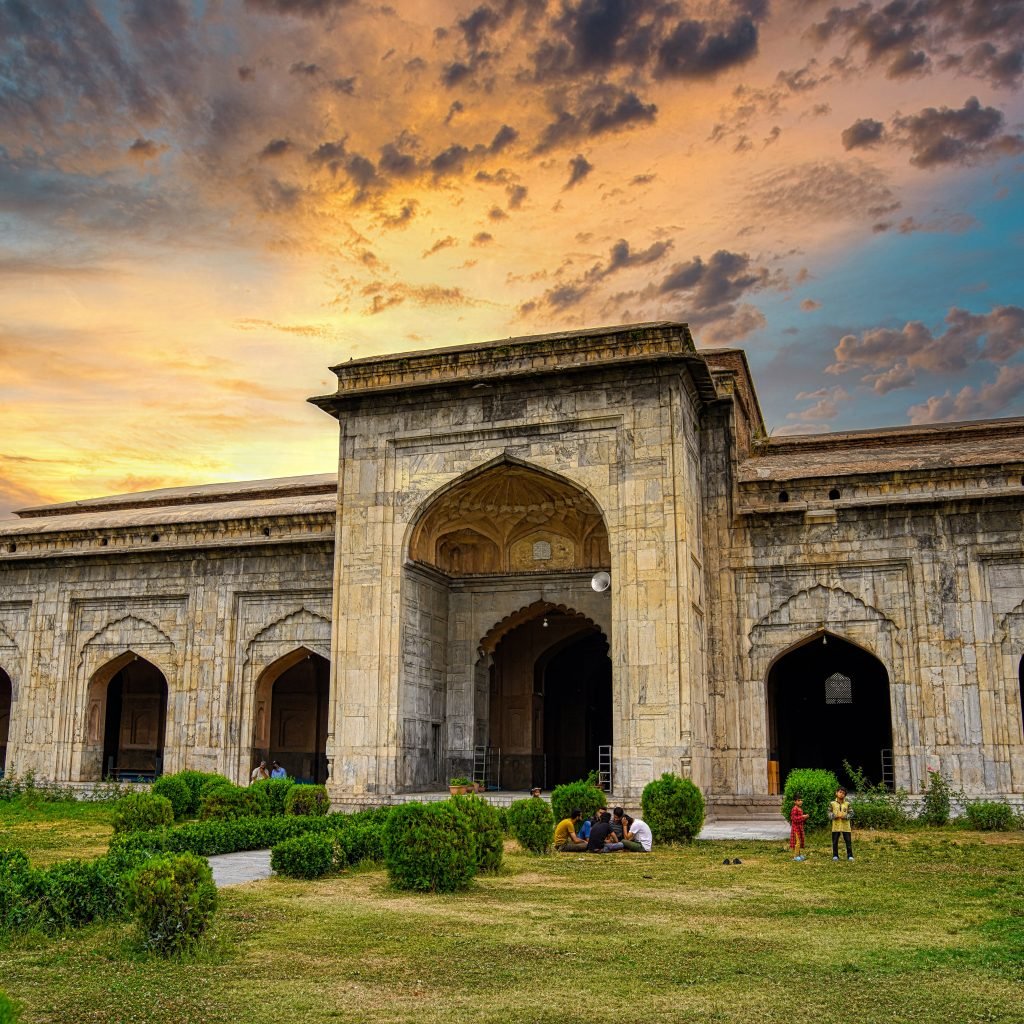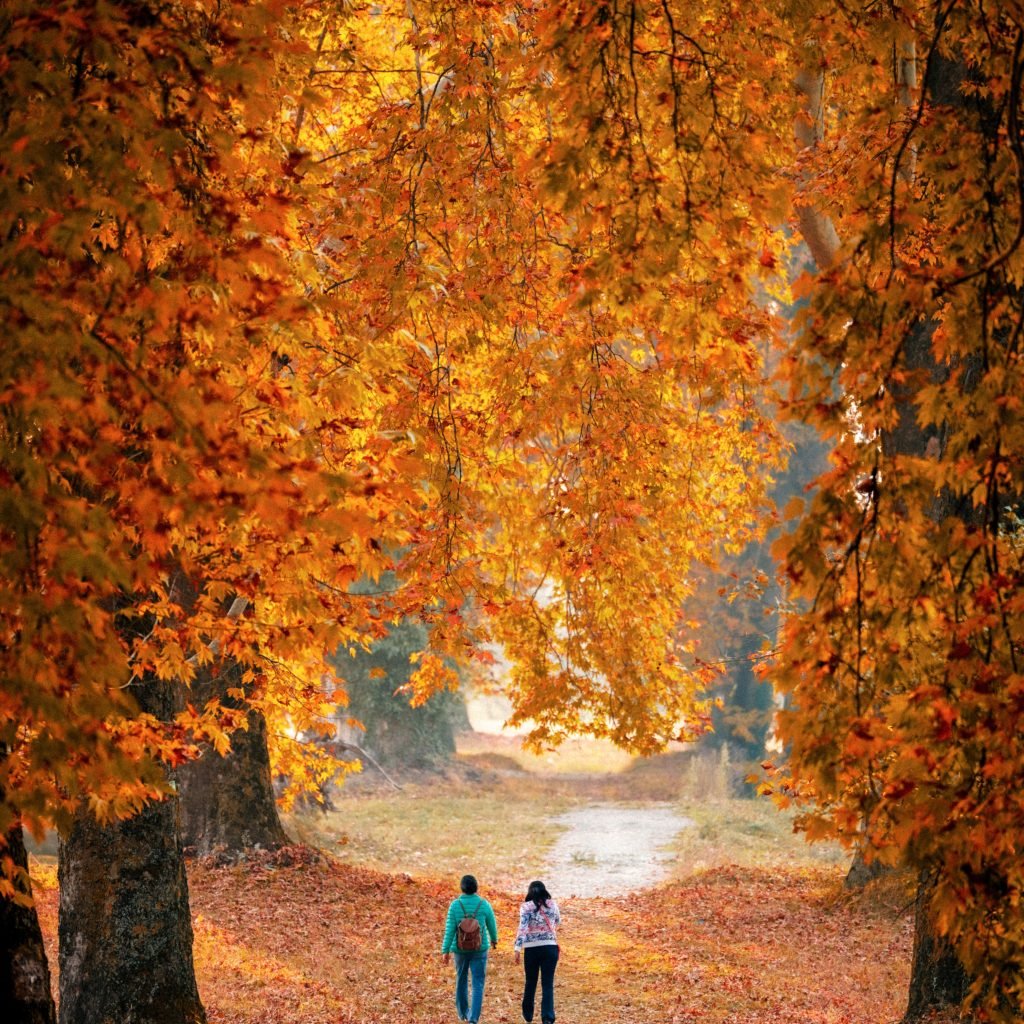Srinagar is full of natural beauty and the mesmerizing landscapes. for you we have summed up top 5 destinations for you which are worth visiting if you are in Srinagar. all the places are unique and breathtaking in itself. so when you plan to tour in Srinagar, better to start as early as possible so that you can cover all the places smoothly.
Dal Lake

Dal Lake is the most important landmark of Srinagar. It figures high on tourist routes and every tourist to the Kashmir valley makes it a point to visit “The Jewel of Srinagar”. Spread over 15 km, this lake is the second largest lake in Jammu and Kashmir. The mirror-like Dal Lake reflects the snow-capped peaks of the Pir Panjal mountains while colorful Shekhars float around. Houseboats and Shikaras are its main attractions. There are two theories for the origin of the lake – one states that it is a post-glacial lake that has undergone a lot of changes in size over the years. The other theory of the origin of the lake states that Dal Lake was formed due to flood spillage from the Jhelum River. Tourists visiting Dal Lake love to take a ride on the beautiful Shikaras, which are beautifully decorated wooden boats with awnings on top.
Tourists also enjoy shopping for authentic Kashmiri items at the floating market (known as Raad) or on the lake. These markets are located in the middle of the lake and sell several items such as saffron and handicrafts vendors set up their hawkers and entice tourists with their fascinating handicrafts, food items e.t.c. The floating gardens are known for the lotus flowers that bloom during July and August. The houseboats on Dal Lake feature floral motifs and intricate carvings and offer stunning views of the majestic lake. These Houseboats are equipped with individual rooms and luxury suites and offer comfortable accommodation to visitors. During the winter season, visitors also enjoy ice skating on the frozen lake. Dal Lake has an average depth of nearly 5 feet and a maximum depth of 20 feet. Covering an area of 18 square kilometers, Dal Lake is part of a natural wetland covering an area of approximately 21 square kilometers that includes floating gardens. Dal Lake is divided into four basins, Bod Dal, Nigeen (also a separate lake), Gagribal, and Lokut Dal. There is an island in the middle of Bod Dal known as Sona Lank. Lokut Dal is also known as Rup Lank and Char Chinari.
Check the shikara rates in Kashmir
Chashme Shahi

The Chashma Shahi (Royal Spring) was built in 1632 by Ali Mardan, governor of Mughal Emperor Shah Jahan, as one of three Mughal Gardens in the Srinagar area. At just over 1.7 acres (0.7 hectares), Chashma Shahi is the smallest of these gardens. However, its attractive features and privileged views over Dal Lake make it the most popular. The Garden displays the serene beauty of Mughal designs. Experience nature in its most ornate form as you climb the garden terraces, which are interspersed with polished walkways, colorful plants, and carved fountains. According to popular belief, the spring was first discovered by the famous Kashmiri saint Rupa Bhavani. Hence, the name of the place is inspired by the clan to which the saint belonged, i.e. Sahib clan of Kashmiri Pandits. Chashme Shahi has a well-kept triple terraced garden that showcases Persian-style architecture. A two-storied hut is placed on the upper terrace of the garden and the structure is believed to be the source of a natural spring. The design here is such that the waterfall flows through the structural layers of the ramp. These ramps form part of the defined terrace of the garden; Upper, middle and lower. Each of these layers houses individual pools and fountains. The entire structure is connected by stairs to reach each level.
The Chashma Shahi Garden is located 5 miles (8 kilometers) east of Srinagar, on the way to Harvan. Get there via taxi or prearranged tour bus. Visit in the blooming season of May or June to see the gardens at their most colorful. You can witness the whole beauty of Dal Lake from the top of Chashma Shahi, Chashma Shahi offers the best view of Dal Lake in the evening, The sunset view from Chashma Shahi is the best thing to witness while you are visiting Kashmir.
Indira Gandhi Memorial Tulip Garden

Asia’s largest tulip garden in Srinagar brings out the ethereal beauty of the blooms on the foothills of the Zabarwan range. The garden was opened to the public in 2007, The Indira Gandhi Memorial Tulip Garden was created to improve floriculture and tourism in the area. This initiative proved to be a great success and in 2017 this beautiful garden was named among the top 5 tulip gardens in the world. The garden is fortunate to have rare varieties of tulips, including the “Queen of the Night”. The highlight of the Indira Gandhi Memorial Tulip Garden is an enchanting annual festival, held in spring between March and May. It houses approximately 15 lakh tulips in over 60 varieties which are the star attraction of the garden during spring in Kashmir, which leads the way at the beginning of the peak tourist season. The garden is spread over an area of 30 hectares, this garden also has daffodil, hyssop, and Muscari flowers. The Indira Gandhi Memorial Tulip Garden is spread across seven terraces and is built in a sloping ground fashion. If you wish to watch two million tulips over 20 acres of the Kashmiri Landscape at 5600 feet altitude, you must visit Asia’s largest Tulip Garden – the Indira Gandhi Memorial Tulip Garden.
Jamia Masjid

Jama Masjid is located in the heart of the old city’s Nowhatta. It was built by Sultan Sikandar Shah Kashmiri Shahmiri in 1394 AD. Later, Sultan Sikandar’s son Zainul Abedin enlarged the mosque. The beautiful Indo-Saracen architecture of the mosque, together with the serene and extensive courtyards, as well as more than 350 wooden pillars, are sure to leave you in awe. The mosque measures 381 feet x 384 feet. It has unique architecture, a courtyard, and 378 Deodar wood pillars supporting a wooden roof of which 346 pillars are 21 feet high and 32 pillars are 48 feet high. The mosque also has a fountain measuring 33ft x 34ft which is also used for ablution (Wazu). Every Friday, thousands of Muslims gather at the mosque to offer their prayers. This Jamia Masjid of Kashmir has seen a lot of destruction to date. It was destroyed by fire three times and rebuilt each time. The last restoration took place during the reign of Maharaja Pratap Singh. The place has the ability to accommodate approximately 40,000 individuals at one time. The lower portion of the walls is made of rectangular stones. There are three big entrance gates on the north, south, and eastern sides of the Mosque confronting three turrets standing on lofty columns of deodar wood. The eastern side has a large entrance called the Shah Gate which is covered with a pyramidal roof surmounted by a square open pavilion (brangh) with a spire on top. A total of 378 wooden columns support the roof. Initially, the roof was covered with birch bark and clay. The western wall of the cloister has a mihrab made of black Kashmiri marble which is adorned with beautiful calligraphic work and has engraved on it ninety-nine attributes of Almighty Allah.
Mughal Gardens
Srinagar is home to the most beautiful Mughal Gardens in India. Apart from being the best showcase of Persian-inspired Mughal architecture, Mughal Gardens Srinagar is known for its exquisite beauty due to its magnificent mountainous natural environment that is unparalleled in all of India. Shalimar Bagh Srinagar, in the foothills of the Pir Panjal range, is a popular tourist destination in the Kashmir valley. One of the main elements of these gardens is flowing water and a pond that reflects the splendor of the sky and the garden. A variety of shade trees, fruits, and flowers, an abundance of colorful wild grasses, soft crocuses, and the singing of birds make the gardens a very peaceful place. The flowing water in the canals and the pond reflecting the beauty of the sky and the garden itself are the main features of the Mughal Gardens. The numbers eight and nine, considered sacred to the Mughals, can be seen in the octagonal pools of the garden architecture. The Mughal Gardens of Srinagar owe their magnificence and unsurpassed heights of excellence to the Mughal emperors Jahangir and Shah Jahan, who had an undying love for the area. Srinagar is home to several fascinating Mughal Gardens that not only showcase the excellent engineering skills of the Mughals but also offer stunning views of Dal Lake and other important landmarks.
Shalimar Bagh

It is the largest Mughal garden in India located on the banks of Dal Lake in Srinagar. It is best visited in the fall and spring seasons. Covering an area of 31 acres, this public garden was built by Mughal Emperor Jahangir in 1619 for his wife Nur Jahan. It is connected to Dal Lake through a 1.6 km long canal which is connected by a pedestrian bridge.
Nishat Bagh

Nishat Garden Srinagar, on the banks of Dal Lake, is one of the most beautiful terraced Mughal gardens in Srinagar. It is often affectionately known as the Garden of Happiness and offers spectacular views of the Zabarwan and Pir Panjal mountain ranges.
Pari Mahal
Overlooking the city of Srinagar from the top of the Zabarwan mountain range, it is a beautiful seven-roof garden that does not have water channels or waterfalls like other gardens. Instead, a system of underground pipes feeds the water tanks
Book Kashmir tour package with Tripmore
Booking a trip to Srinagar has become a lot easier these days, it just requires a few steps and we are good to start our trip. You can book a tour easily on Tripmore without any hassle and from the comfort of your home. call our 24 hours helpline +91-7051909192.
Etios cab service in Kashmir
Swift desire cab service in Kashmir
Innova cab service in Kashmir
Innova Crysta cab service in Kashmir
Tempo Traveler cab service in Kashmir
mini bus cab service in Kashmir


Comment (0)